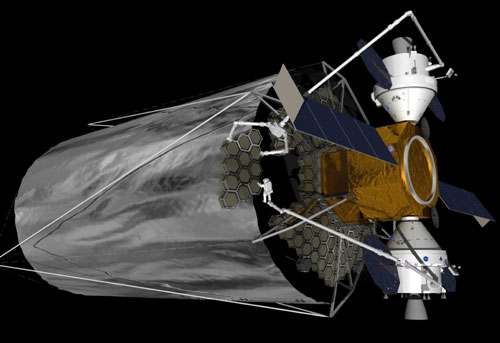 In the nearly 25 years since the launch of the Hubble Space Telescope (HST), astronomers and the public alike have enjoyed ground-breaking views of the cosmos and the suite of scientific discoveries that followed. The successor to HST, the James Webb Telescope should launch in 2018 but will have a comparatively short lifetime.
In the nearly 25 years since the launch of the Hubble Space Telescope (HST), astronomers and the public alike have enjoyed ground-breaking views of the cosmos and the suite of scientific discoveries that followed. The successor to HST, the James Webb Telescope should launch in 2018 but will have a comparatively short lifetime.
Jun 22nd, 2014
Read more
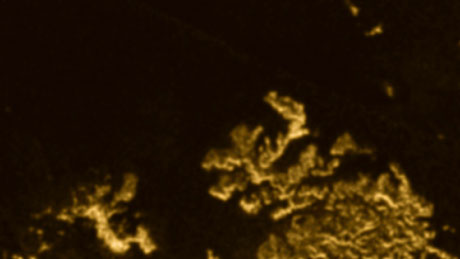 Astronomers have discovered a bright, mysterious geologic object - where one never existed - on Cassini mission radar images of Ligeia Mare, the second-largest sea on Saturn's moon Titan. Scientifically speaking, this spot is considered a 'transient feature', but the astronomers have playfully dubbed it 'Magic Island'.
Astronomers have discovered a bright, mysterious geologic object - where one never existed - on Cassini mission radar images of Ligeia Mare, the second-largest sea on Saturn's moon Titan. Scientifically speaking, this spot is considered a 'transient feature', but the astronomers have playfully dubbed it 'Magic Island'.
Jun 22nd, 2014
Read more
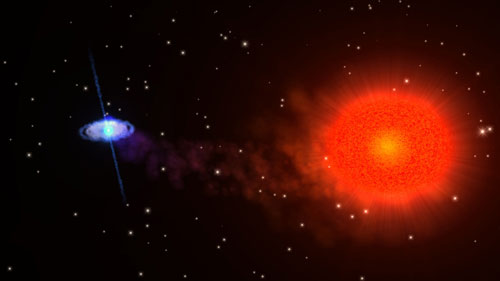 An x-ray investigation of a slowly rotating neutron star paired with a red-giant star reveals properties that conflict with existing theory.
An x-ray investigation of a slowly rotating neutron star paired with a red-giant star reveals properties that conflict with existing theory.
Jun 20th, 2014
Read more
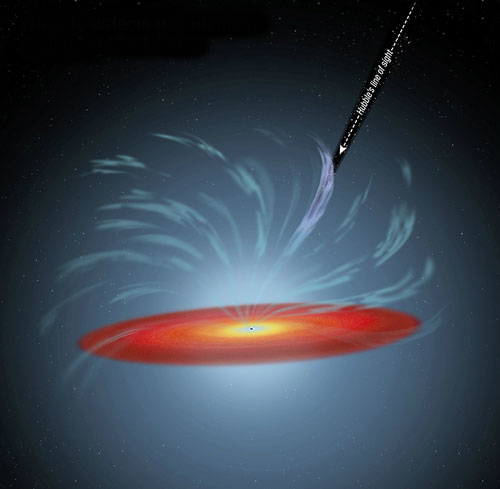 An international team of astronomers, using data from several NASA and European Space Agency (ESA) space observatories, has discovered unexpected behavior from the supermassive black hole at the heart of the galaxy NGC 5548, located 244.6 million light-years from Earth. This behavior may provide new insights into how supermassive black holes interact with their host galaxies.
An international team of astronomers, using data from several NASA and European Space Agency (ESA) space observatories, has discovered unexpected behavior from the supermassive black hole at the heart of the galaxy NGC 5548, located 244.6 million light-years from Earth. This behavior may provide new insights into how supermassive black holes interact with their host galaxies.
Jun 19th, 2014
Read more
Following a thorough peer-review process, the researchers who previously announced the detection of B-mode polarization in a patch of the microwave sky have published their findings today. Possibly primordial gravitational waves, but galactic dust not ruled out.
Jun 19th, 2014
Read more
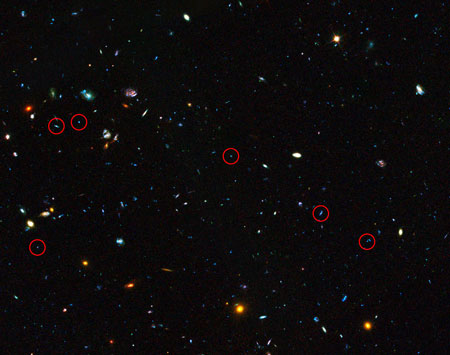 They may only be little, but they pack a star-forming punch: new observations from the Hubble Space Telescope show that starbursts in dwarf galaxies played a bigger role than expected in the early history of the Universe.
They may only be little, but they pack a star-forming punch: new observations from the Hubble Space Telescope show that starbursts in dwarf galaxies played a bigger role than expected in the early history of the Universe.
Jun 19th, 2014
Read more
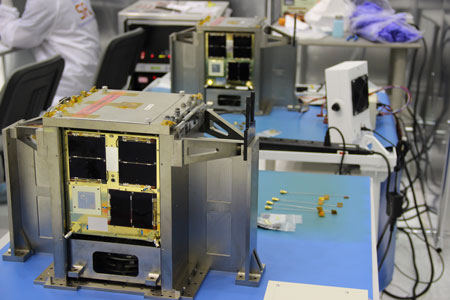 Costing a fraction of conventional space telescopes and similar in size and weight to a car battery, the satellites are two of six that will work together to shed light on the structures and life stories of some of the brightest stars in the sky, uncovering unique clues as to the origins of our own Sun and Earth.
Costing a fraction of conventional space telescopes and similar in size and weight to a car battery, the satellites are two of six that will work together to shed light on the structures and life stories of some of the brightest stars in the sky, uncovering unique clues as to the origins of our own Sun and Earth.
Jun 19th, 2014
Read more
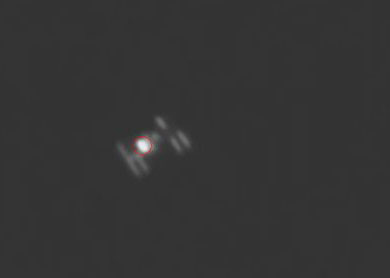 On June 5th, 2014, the ISS passed over the Table Mountain Observatory in Wrightwood, California, and beamed an HD video to researchers waiting below. Unlike normal data transmissions, which are encoded in radio waves, this one came to Earth on a beam of light.
On June 5th, 2014, the ISS passed over the Table Mountain Observatory in Wrightwood, California, and beamed an HD video to researchers waiting below. Unlike normal data transmissions, which are encoded in radio waves, this one came to Earth on a beam of light.
Jun 18th, 2014
Read more
 Theory says there may be disk of it at center of galaxy.
Theory says there may be disk of it at center of galaxy.
Jun 18th, 2014
Read more
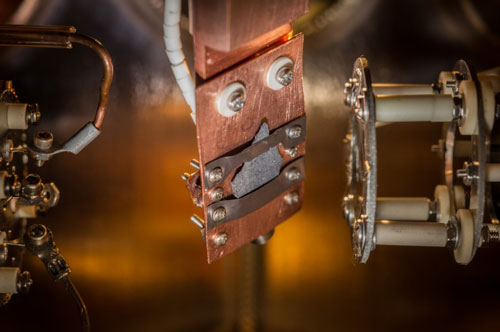 New research indicates that ultraviolet photons emitted by the sun likely cause H2O molecules on the lunar surface to either quickly desorb or break apart. The fragments of water may remain on the lunar surface, but the presence of useful amounts of water on the sunward side is not likely.
New research indicates that ultraviolet photons emitted by the sun likely cause H2O molecules on the lunar surface to either quickly desorb or break apart. The fragments of water may remain on the lunar surface, but the presence of useful amounts of water on the sunward side is not likely.
Jun 17th, 2014
Read more
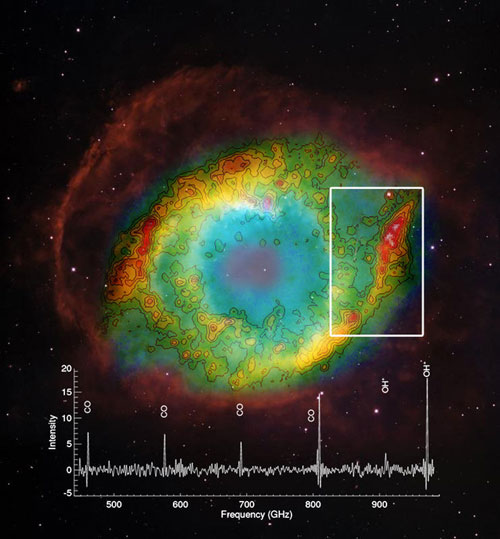 Using ESA's Herschel space observatory, astronomers have discovered that a molecule vital for creating water exists in the burning embers of dying Sun-like stars.
Using ESA's Herschel space observatory, astronomers have discovered that a molecule vital for creating water exists in the burning embers of dying Sun-like stars.
Jun 17th, 2014
Read more
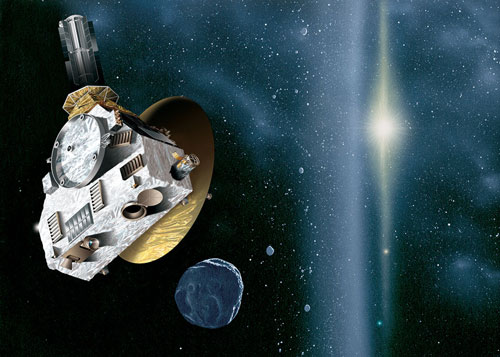 The Hubble Space Telescope Time Allocation Committee has recommended using Hubble to search for an object the Pluto-bound NASA New Horizons mission could visit after its flyby of Pluto in July 2015.
The Hubble Space Telescope Time Allocation Committee has recommended using Hubble to search for an object the Pluto-bound NASA New Horizons mission could visit after its flyby of Pluto in July 2015.
Jun 16th, 2014
Read more
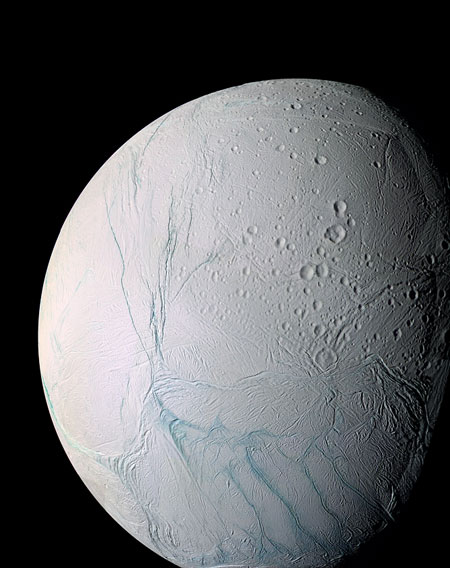 If the icy surface of Pluto's giant moon Charon is cracked, analysis of the fractures could reveal if its interior was warm, perhaps warm enough to have maintained a subterranean ocean of liquid water, according to a new study.
If the icy surface of Pluto's giant moon Charon is cracked, analysis of the fractures could reveal if its interior was warm, perhaps warm enough to have maintained a subterranean ocean of liquid water, according to a new study.
Jun 13th, 2014
Read more
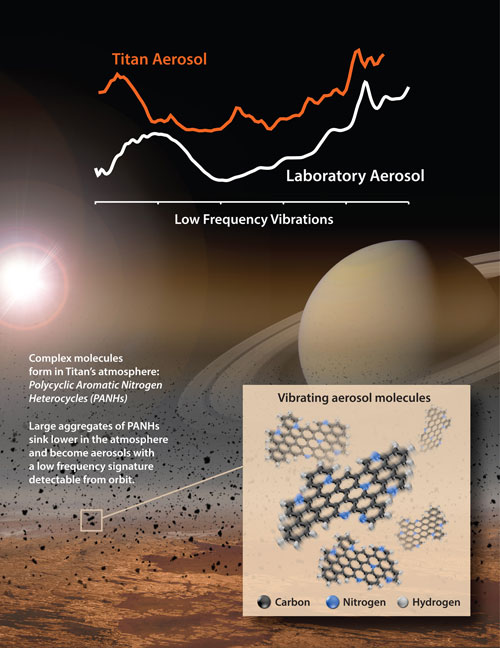 NASA scientists have created a new recipe that captures key flavors of the brownish-orange atmosphere around Saturn's largest moon, Titan.
NASA scientists have created a new recipe that captures key flavors of the brownish-orange atmosphere around Saturn's largest moon, Titan.
Jun 13th, 2014
Read more
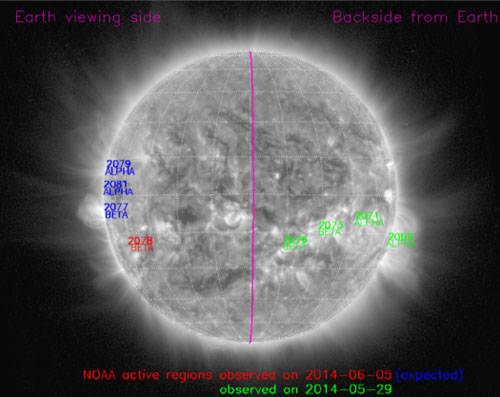 For the first time, ESA is providing regular space-weather reports for a spacecraft orbiting another planet.
For the first time, ESA is providing regular space-weather reports for a spacecraft orbiting another planet.
Jun 13th, 2014
Read more
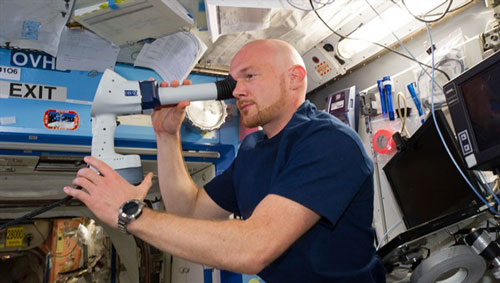 Alexander Gerst has been living and working in microgravity since 29 May 2014, and the focus of his initial research on the International Space Station (ISS) is currently himself.
Alexander Gerst has been living and working in microgravity since 29 May 2014, and the focus of his initial research on the International Space Station (ISS) is currently himself.
Jun 12th, 2014
Read more
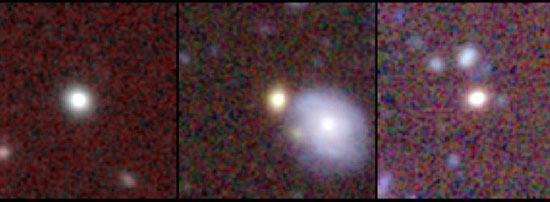 The world of astronomy has changed. An astronomer used to have to travel to a remote location and endure long, cold nights, patiently guiding a telescope to collect precious photons of light. Now, a proliferation of online archives allows astronomers to make discoveries from the comfort of their own offices. By mining such archives, a team of astronomers has found a treasure trove of 'red nugget' galaxies.
The world of astronomy has changed. An astronomer used to have to travel to a remote location and endure long, cold nights, patiently guiding a telescope to collect precious photons of light. Now, a proliferation of online archives allows astronomers to make discoveries from the comfort of their own offices. By mining such archives, a team of astronomers has found a treasure trove of 'red nugget' galaxies.
Jun 11th, 2014
Read more
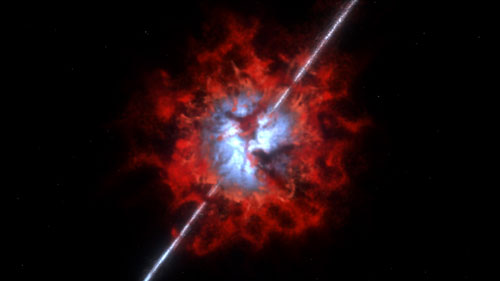 Using the Atacama Large Millimeter/submillimeter Array (ALMA), a team of researchers reports the first-ever detection of molecular gas in two galaxies that were previously rocked by gamma ray bursts (GRBs), the brightest explosions in the Universe. These new observations revealed that the molecular gas was concentrated toward the centers of the galaxies, while the GRBs occurred in unusual environments that were surprisingly bereft of gas yet rich in dust.
Using the Atacama Large Millimeter/submillimeter Array (ALMA), a team of researchers reports the first-ever detection of molecular gas in two galaxies that were previously rocked by gamma ray bursts (GRBs), the brightest explosions in the Universe. These new observations revealed that the molecular gas was concentrated toward the centers of the galaxies, while the GRBs occurred in unusual environments that were surprisingly bereft of gas yet rich in dust.
Jun 11th, 2014
Read more
 In the nearly 25 years since the launch of the Hubble Space Telescope (HST), astronomers and the public alike have enjoyed ground-breaking views of the cosmos and the suite of scientific discoveries that followed. The successor to HST, the James Webb Telescope should launch in 2018 but will have a comparatively short lifetime.
In the nearly 25 years since the launch of the Hubble Space Telescope (HST), astronomers and the public alike have enjoyed ground-breaking views of the cosmos and the suite of scientific discoveries that followed. The successor to HST, the James Webb Telescope should launch in 2018 but will have a comparatively short lifetime.
 Subscribe to our Space Exploration News feed
Subscribe to our Space Exploration News feed














